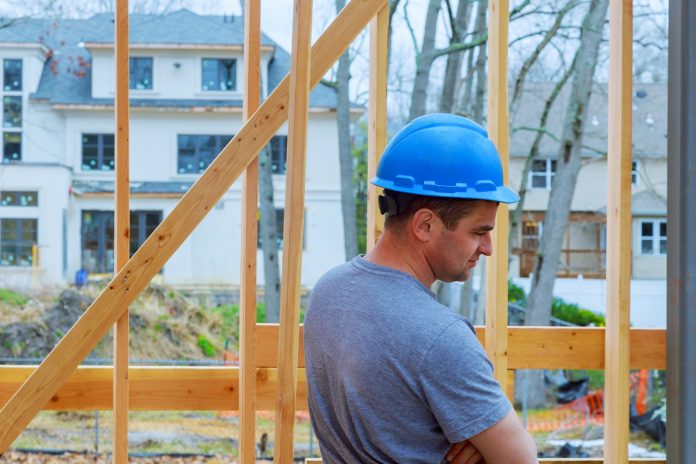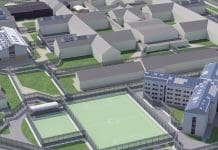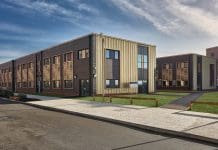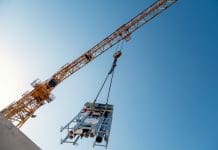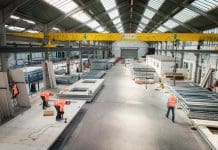Buildings and building materials are major contributors to carbon emissions. Engineered timber offers a sustainable, green option to reduce this but its use may be restricted by flawed assumptions, argues Matthew Linegar of Stora Enso
Say the word “decarbonisation” and most people will conjure mental images of solar panels, wind turbines and shiny new electric cars. However, the chances are they aren’t putting much thought into the house the solar panels are mounted on, or the EV is plugged into.
When it comes to decarbonisation, buildings and building materials are the elephant in the room, hitherto largely avoided in the UK environmental conversation. That needs to change urgently if we are serious about decarbonising society and achieving the UK’s target of net zero by 2050.
However, the most obvious sign of movement is a retrograde step with the proposed forthcoming extended combustibles ban, first introduced in December 2018. This is a blunt instrument that threatens to throttle the growing use of engineered timber: a green construction material that helps can help achieve these targets.
In the year that the UK hosts COP 26, we simply cannot afford to be removing proven green building options from the table.
Locking in mistakes
According to the World Green Building Council, buildings account for 39% of global emissions. This splits into 28% for operation of buildings and 11% comes from “embodied carbon emissions associated with materials and construction processes throughout the whole building lifecycle”.
This is alarming: every home and office we continue to build now using traditional construction materials and techniques is a missed opportunity to lower the carbon intensity of that 2050 building stock and help achieve our carbon ambitions.
What’s worse, we are locking in carbon-intensive buildings for decades to come. The World Green Building Council points out that: “Carbon emissions released before the building or infrastructure begins to be used […] will be responsible for half of the entire carbon footprint of new construction between now and 2050, threatening to consume a large part of our remaining carbon budget.”
So, every day we continue with the status quo, we lock in long-term environmental consequences.
Engineered timber: A green option
Engineered timber is a genuine alternative. This is not standard timber frame construction, but rather advanced materials made from wood that boast comparable structural properties to traditional building materials, with other supplementary benefits too. Around the world, developers and contractors have been using materials such as cross laminated timber (CLT) and laminated veneer lumber (LVL) in apartment complexes, office blocks and schools as a green alternative to traditional materials.
Why is engineered timber such an attractive green option? Wood is the ultimate renewable material – it literally grows on trees. So long as it is harvested from strictly sustainably managed forests, it will not run out. In Scandinavian forests, for example, the volume of timber for an apartment complex grows back in a matter of minutes on a sunny summer day, and the production of engineered timber causes relatively low CO2 emissions versus traditional materials.
Plus, as that biomass grows, it removes carbon dioxide from the air and stores it in the wood, for the lifetime of the building, while new trees grow and continue to remove carbon dioxide. In other words, wooden buildings store carbon, rather than add to the problem. The Committee on Climate Change posits that “scenarios with high growth in timber construction up to 2050 showed total embodied emissions are 0.8-1.0 Mt CO2e pa lower and sequestered carbon [in buildings] is 1.0-1.3 Mt CO2e pa higher” compared with business as usual.
Unnecessary restrictions
The UK is waking up to the potential of engineered timber – albeit later and more slowly than in some other places in the world, such as Scandinavia, Central Europe and America. From Hackney to Glasgow, there are pioneering engineered timber projects already proving the potential of these materials.
However, the upcoming extended combustibles ban threatens to choke off this progress at precisely the time when we need to build green momentum. Already, in its current form, it has discouraged the use of engineered timber even when it is appropriate. By reducing the limit at which the rules apply from 18m building height to 11m, the message will be interpreted by many as taking the material off the table – an unintended and unacceptable consequence of a blunt regulation.
In fact, the evidence tells us that engineered timber is fire safe when proper design principles are observed. We need designers that fully understand the performance of combustible and charring materials to ensure that the design and construction meets or exceeds the requirements of the building regulations.
Of course, building design and our knowledge is not static, and over time we learn more about the fire performance of engineered timber. The industry has a responsibility to invest in continuous development of knowledge and best practice – and the industry welcomes this. For example, we at Stora Enso are leading a special interest group under the Structural Timber Association (STA) together with other leading CLT manufacturers and industry experts to better understand CLT fire compartment behaviour to make it easy for designers to specify.
Quite simply, we cannot afford to restrict genuinely green options at a time of increasing environmental need based on flawed assumptions. The UK building stock urgently needs to decarbonise, and we need a range of green materials available to responsible developers and architects to deliver that transformation.
Director of R&D and product management
Stora Enso
+358 20 46 131


